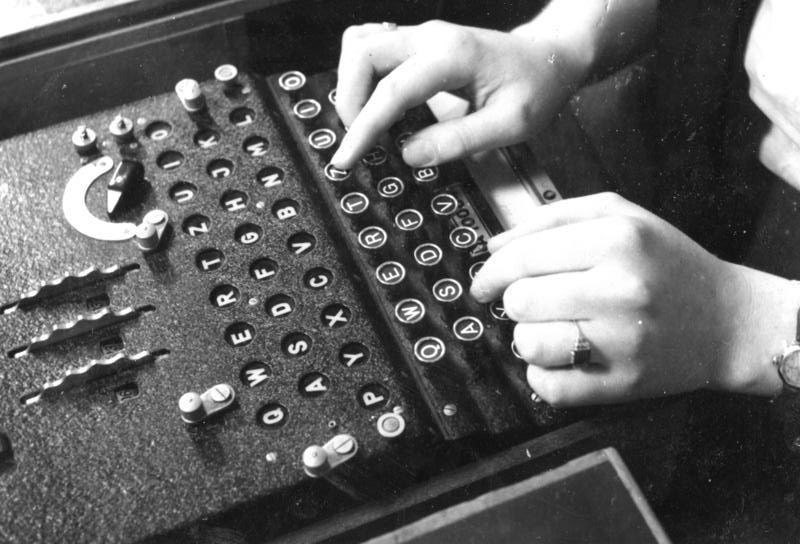
Photo Credit: “Chiffriermaschine ‘Enigma’ ” by Walther licensed by Wikimedia Commons under Creative Commons
The Enigma Machine was practically impregnable if all of its information was kept secret and all its operators worked without human error. With billions and billions of possible settings, it would have taken cryptanalysts an obscene amount of time to sort through all of the possible keys. Additionally, with an ever changing pattern and shifting scramblers it would be incredibly hard to find a method to deduce the plaintext if all one had was pure ciphertext, even with if the most brilliant minds in Britain working on a solution. Essentially, cracking the Enigma required some sort of “crib”, some insight into how the code was working on a specific day that would take out some of the possible Enigma settings. Because of this, the cryptanalysts would not have had the success that they did without the help of two things; German cryptographer’s mistakes in using the code and the espionage and tricks of the Allied forces.
A clue into the how the code was being run a certain day was often acquired from the mistakes of the Germans. For example, when German operators were picking keys they would often choose “three consecutive letters from the Enigma keyboard” or even use the same key as they had used previously (Singh, p.164). These mistakes, known as cillies, became vital to Bletchley Park’s decoding of the Enigma machine. Because they knew that some keys were more likely to show up than others, they could try their hunches first and would save valuable time if they were proven correct. Basically, the Enigma machine was still doing its job; it’s just that the operators proved to be too predictable. In addition, the Germans took efforts to make the Enigma machine more secure that often backfired and lessened the impregnability of the cipher. For instance, they decided that a scrambler couldn’t stay in the same position for two days in a row (Singh, p.164). This may seem to make it more random, but it actually excluded many of the possible scrambler arrangements that British cryptanalysts had to weed through.
When all else failed, however, and German mistakes and bright Bletchley park minds didn’t produce a crib, espionage and trickery became key. When they couldn’t find a crib, it seemed, British cryptographers would create one. By manufacturing situations where the German U-Boats would have to send messages with a specific location in the cipher, the British cryptanalysts could gain insight into the way the cipher was working. Because they knew the location of whatever the U-Boats had sighted (be it a convoy or a mine), the British had a bit of plaintext to work with. With this plaintext, they could employ Turing’s loop method and decrypt the scrambler and plug board settings of the day. All in all, using the openings found in the Germans operational mistakes and those created by Allied operations, the cryptanalysts at Bletchley Park could decrypt the Enigma, collecting valuable information that would help them win the war.









